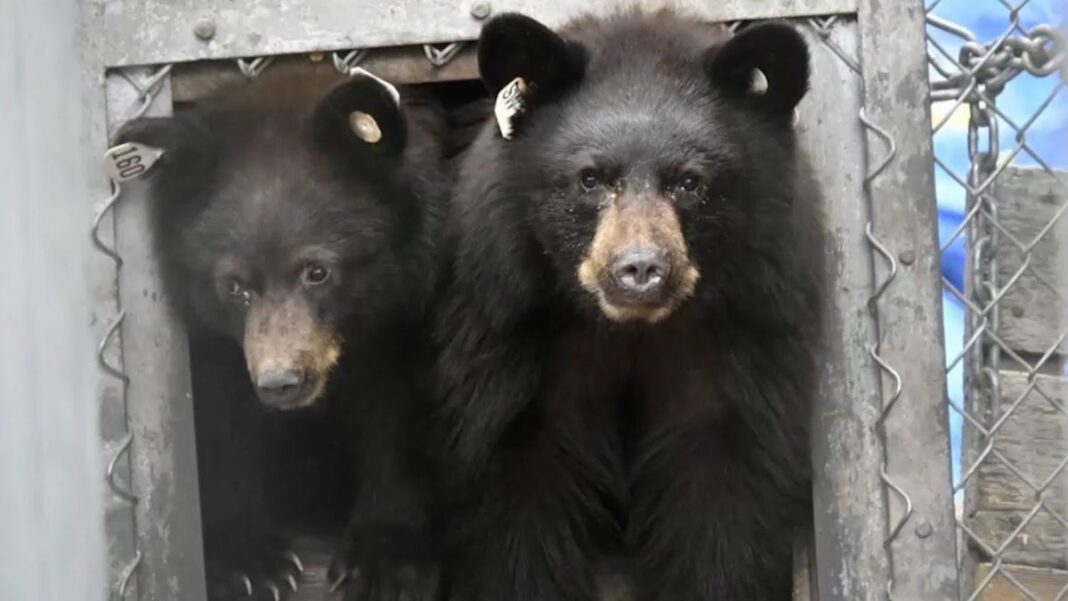Watch as orphaned bears are released back into the wild after being rehabbed in Colorado
Five bear cubs, thought to be without their mother, have been set free after receiving care at a rehabilitation center run by Colorado Parks and Wildlife during the summer.
The cubs were found in different circumstances and were released on November 20 at various sites near Pagosa Springs, situated about 250 miles southwest of Colorado Springs and close to the New Mexico border, according to a post from the Durango office of the agency on Facebook.
One group of three cubs was rescued after their mother was put down following an incident where she entered a residence in the Durango area, as reported by ABC News. According to the agency’s policy, bears that come into close proximity with humans must be euthanized to prevent further dangerous interactions.
Because the cubs did not enter the home themselves, wildlife officers captured them, checked their health, and decided that rehabilitation was the best option, agency spokesperson John Livingston explained to ABC News.
Another cub was discovered wandering alone in a southern Jefferson County resident’s yard in June. The wildlife agency concluded that since it was too young to be on its own, it was orphaned.
The cubs were taken to the Frisco Creek Wildlife Rehabilitation Center in Del Norte, where they were housed with other cubs to “grow and socialize.”
Rehabilitating the bears
During their recovery at the agency’s facility, strict measures were implemented to ensure the bears would not form connections with humans.
“We maintain silence near the bear pens, and the bears are never fed in sight of people,” the agency noted. “Their diet consists of both prepared food and natural offerings like berries and decomposed fish from a hatchery.”
Agency spokesperson Kara Van Hoose said on Monday that the cubs were kept in pens “with coverings on the slides to block their view of any humans.”
The cubs are fed without human interaction, and as they mature, “they are moved to larger enclosures with other rehabilitated bears.” As seasonal changes occur, preparations for hibernation are made, and their diet is adjusted to increase sugar content while eliminating protein.
“We gradually reduce their feeding as the year progresses to mimic natural wild conditions and stimulate their bodies to enter hibernation,” Van Hoose explained. “When they are prepared for hibernation, we release them into the wild to help them find their own dens.”
When they begin instinctively trying to create dens at the rehab site—either by digging in the aspen groves or using sticks and hay bales to make cozy spots—they will weigh between 60 and 70 pounds, indicating they are ready to be released to find their own natural dens before winter sets in.
Releasing the bears into the wild
The bears are transported to areas where the wildlife agency has seen a “high success rate of not having the bears return as conflicts or roadkill.”
Footage shared by the agency captures the bears running swiftly away from the trucks and into the trees.
“In both cases on Wednesday, the cubs did precisely what we hoped: they dashed away and displayed their natural fear of humans,” the agency noted.
This year, out of 25 cubs that were rehabilitated at Frisco Creek, eight were released on Wednesday, following three others earlier in the week. The agency anticipates that eight more will be released shortly, noting that the remaining cubs are “not yet fat enough.”
Releasing the bears at this time “optimizes their rehabilitation period, while simultaneously providing them time in the wild to prepare for hibernation and denning,” the agency explained.
The cubs still at Frisco Creek will continue to eat before going into artificial den boxes for a later release in January or February. “We strive to have cubs weigh around 80 pounds before their release to enhance their chances of surviving winter and early spring,” added the agency.

